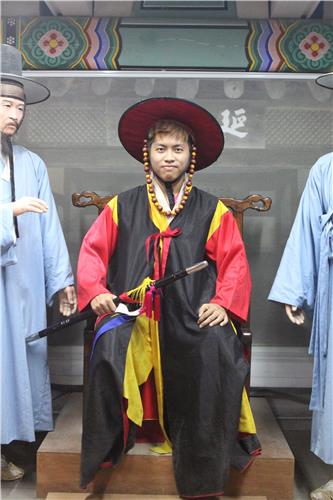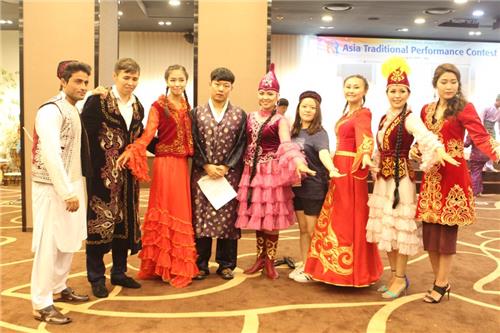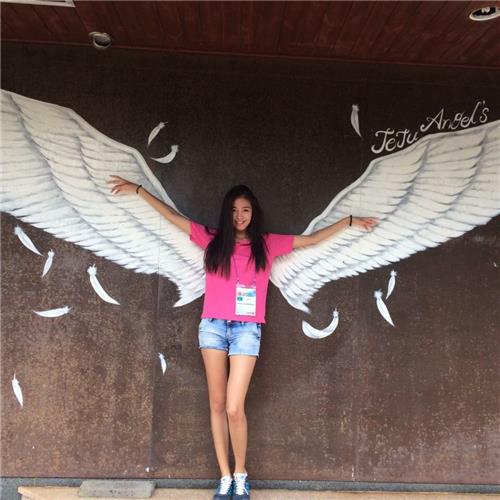- California Assembly OKs highest minimum wage in nation
- S. Korea unveils first graphic cigarette warnings
- US joins with South Korea, Japan in bid to deter North Korea
- LPGA golfer Chun In-gee finally back in action
- S. Korea won’t be top seed in final World Cup qualification round
- US men’s soccer misses 2nd straight Olympics
- US back on track in qualifying with 4-0 win over Guatemala
- High-intensity workout injuries spawn cottage industry
- CDC expands range of Zika mosquitoes into parts of Northeast
- Who knew? ‘The Walking Dead’ is helping families connect
Korean culture breathes global mind-set into young Asian hearts
SEOUL, Aug. 24 (Yonhap) — For Asian millennials, a global mindset is not about multilingual ability, tariff-free trade and working in foreign-invested firms, as had once been the case. Now the term is about creative content that brings different cultures together.
“To me, a global mindset means feeling and acting like a global citizen and not just a citizen from your own country,” says Israel Ying Ding, a 19-year-old Burmese student, at Changdeok Palace in central Seoul on Aug. 11.
“A global mindset doesn’t necessarily come from speaking many languages. I have a Mongolian roommate in this program. He doesn’t speak much English, and I don’t speak much Korean, but it didn’t take long before we understood what each other needs and likes,” he continued.

This photo, released by the Ministry of Gender Equality and Family, shows Israel Ying Ding, a 19-year-old Burmese participant of the Youth Camp for Asia’s Future 2016, visiting tourist attractions in Seoul in August 2016.
As a freshman at a prestigious medical school in Myanmar, the Asian student came to Korea to participate in an annual international program. Since 2006, the annual global cultural event has been hosted by the South Korean Ministry of Gender Equality and Family and organized by the National Council of Youth Organizations in Korea.
This year’s program ran from Aug. 2-14 in the Korean cities of Seoul, Suwon, Andong, Gyeongju and Jeju Island. The students visited selective Korean world heritages, such as Suwon Hwaseong, a fortress in the Joseon period (1392-1910) in Suwon, Gyeonggi Province, and Hahoe Village in Andong of North Gyeongsang Province, a site visited by Britain’s Queen Elizabeth II in 1999. The folk village is the cradle of “hahoe tal,” a uniquely crafted traditional wooden mask.
In addition to exploring historical sites in Korea, the program offered a special lecture, titled the “Competitiveness of Asian culture in the world.” Some of the Korean cultural experiences were a traditional Korean musical performance and a demonstration of Korea’s indigenous martial art “taekgyun.”
In the Asian culture sector, the students discussed tools for globalizing Asian culture and the role the Asian youth have in spreading the benefits of Asian culture. The participants also worked in teams to make an Asian calendar, put on an Asian traditional performance and enjoy an Asian dessert festival to enhance their understanding of cultural diversity.
To Ding, a global mindset is enjoying the innovative things that others have discovered and vice versa.
Ding enjoys Korean television shows and K-pop despite Korean actors and singers rarely visiting his home country. The first Korean drama he watched was “Autumn in My Heart,” starring top South Korean actors Song Seung-heon and Won Bin, and star actress Song Hye-kyo. He bought the drama from a street vendor selling pirated copies of hit films and television shows. At first, he fell in love with the story, and as time went on, he became fascinated with the lifestyle of Koreans depicted in the show.

This photo, released by the Ministry of Gender Equality and Family, shows some of the 205 international participants of the Youth Camp for Asia’s Future 2016.
“I like Korean dramas not because they are made in Korea, but because the stories are creative,” Ding said, citing the South Korean hit drama “My Love From the Star” as an example.
There are many television series that take motifs of heroes with supernatural powers and those from alien origins, but the Korean drama broke free of these cliches, according to Ding.
Ding shared his new-found interest with his friends. In one particular case, Ding gave a rented DVD of the hit South Korean military romantic comedy “Descendants of the Sun” to a friend.
“He watched the entire season straight through,” he said, bursting into laughter.
While watching well-made Korean dramas, Ding also became a fan of K-pop songs. At the talent show on the program’s welcoming night, he wowed other international participants by singing “My Destiny,” a mellow ballad by K-pop star Lynn, which was on the original soundtrack of “My Love from the Star.”
Although he’s more into Korean dramas, the Burmese medical student said he liked K-pop’s inspirational aspect.
“K-pop singers start their singing careers at such a young age. My career is far from theirs, but I admire the passion and the success stories of the K-pop singers.”

This photo, released by the Ministry of Gender Equality and Family, shows Sheshembekova Madina Maratovna, a 20-year-old Kazakhstan participant of the Youth Camp for Asia’s Future 2016, during her visit to Korea in August 2016.
Ding is one of the 205 bright young men and women from 22 Asian countries who came to enhance their understanding and engagement in future-oriented pan-Asian teamwork.
Accompanied by Ding was Sheshembekova Madina Maratovna, a 20-year-old college student from Kazakhstan. Maratovna is one of the 30 students who major in Korean studies at Eurasian National University in the Kazakhstan capital of Astana — one of the two Kazakhstan cities that offer Korean studies as a major.
She thanked her parents for letting her major in Korean studies because she could have majored in mathematics with a full scholarship. She was good at mathematics since a young age, but she ultimately chose to major in the subject that she felt most intrigued by.
“I don’t feel bound to work in Korean companies in Kazakhstan, but I think learning the Korean language and culture will lead to new opportunities in the end,” she continued.
In addition to her studies, she is engaged in part-time modeling at home. The young woman had a special eye for fashion and style. Although she’s very choosy about her style, she is more than willing to adopt competitive beauty tips.
As a high school student, she and her friends frequently watched South Korean-style makeup tutorials on YouTube. She bought South Korean cosmetics products, such as those from It’s Skin, Mishaa and Etude House. The products cost more in Kazakhstan than in Korea, so they would save up their money to buy the Korean beauty products, she said.
“I started trimming my eyebrows in linear shape, like Korean girls do. I think it fits me better,” Maratovna said.
On her way back, she plans to bring home some Korean blemish balms and Air Cushion cosmetics products.
With her strength in mix-and-matching Korean products with domestic ones, Maratovna credited the ongoing K-pop boom in Kazakhstan as a positive factor for her age group.
“I think the K-pop culture helps us become more fond of diversity. When I compare my friends with experience in K-pop and those who haven’t, I think the former is more open-minded about new ideas.”












que significa
August 24, 2016 at 7:05 PM
Charlie Harary | UNLOCKING GREATNESS, INSPIRING …